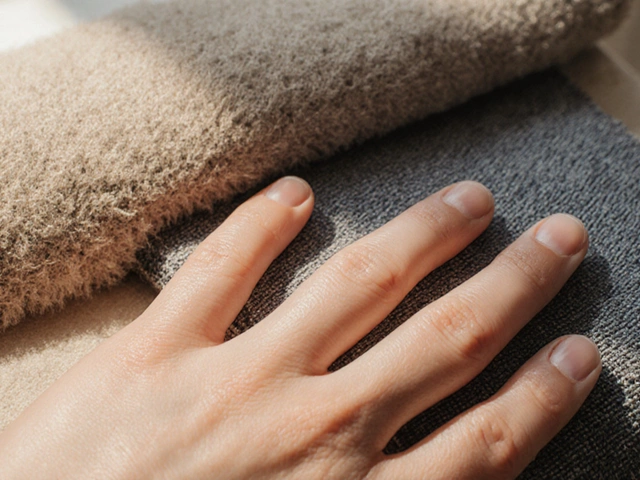30-60s Workout Time Calculator
Calculate Your Session Time
Enter how many rounds you plan to do (6-15 rounds recommended) to see total workout duration
If you’ve seen a gym class or a TikTok timer flashing 30 60s exercise and wondered what the hype is about, you’re in the right place. This article breaks down the method, shows why it can level‑up your fitness, and gives you a step‑by‑step plan you can try today.
What is the 30 60s exercise is a high‑intensity interval training (HIIT) format where you work hard for 30 seconds and then rest for 60 seconds before repeating.?
In plain terms, you pick an activity-sprints, burpees, kettlebell swings-push at near‑maximum effort for half a minute, then pause for a full minute. The cycle repeats for a set number of rounds, usually 8‑12. The longer rest makes it friendlier for beginners while still delivering the metabolic punch of traditional HIIT.
How does it fit into HIIT short for High‑Intensity Interval Training, a workout style that alternates brief bursts of intense effort with recovery periods. and interval training a training method that breaks a workout into distinct periods of work and rest.?
The 30/60 split is a specific flavor of HIIT. While classic HIIT might use 20‑second work / 10‑second rest (the popular Tabata protocol), the 30/60 structure lowers the intensity ratio (1:2) making it easier to maintain proper form and keep heart‑rate spikes sustainable across more rounds.
Key Benefits
- cardiovascular health the condition of the heart and blood vessels, often improved by aerobic exercise.: This pattern forces your heart to accelerate during the 30‑second burst and recover during the 60‑second break, strengthening both systolic and diastolic function.
- muscle endurance the ability of a muscle to sustain repeated contractions over time.: Repeating short, intense bouts trains fast‑twitch fibers while the rest intervals let those fibers recover enough to fire again.
- metabolic rate the speed at which the body burns calories at rest and during activity. gets a boost. The after‑burn (EPOC) effect lasts longer because the body works to clear lactate and replenish energy stores.
- workout intensity the level of effort measured by heart rate or perceived exertion. stays high enough to improve VO2 max, yet the 60‑second rest period the time allocated for recovery between work bouts. reduces injury risk for beginners.

How to Perform the 30 60s Exercise
- Choose a movement that can be done safely at high intensity (e.g., jump squats, mountain climbers, rowing).
- Set a timer for 30 seconds of work followed by 60 seconds of rest.
- During the work phase, aim for 8‑9 on a 10‑point perceived exertion scale (you should be breathing hard but able to speak in short phrases).
- When the 60‑second rest begins, keep moving lightly-walk in place or stretch-to avoid a sudden drop in heart rate.
- Repeat the cycle for the desired number of rounds. Beginners start with 6‑8 rounds; advanced athletes can push to 12‑15.
Remember to warm up for at least five minutes (dynamic stretches, light cardio) and cool down with static stretches to aid recovery.
Sample Routines for Different Fitness Levels
Beginner
- Exercise: Bodyweight squats
- Rounds: 8
- Total time: ~12 minutes
Intermediate
- Exercise: Kettlebell swings (moderate weight)
- Rounds: 10
- Total time: ~15 minutes
Advanced
- Exercise: Sprint intervals on a treadmill or outdoor track
- Rounds: 12
- Total time: ~20 minutes

Tips for Success & Common Mistakes
- Don’t sacrifice form for speed. Quality reps prevent joint strain.
- Keep the rest truly restful. If you’re still panting hard, extend the rest by 10‑15 seconds.
- Track your heart rate. Aim for 85‑95% of max HR during work phases.
- Progress gradually. Add weight, increase rounds, or shorten rest only after you’re comfortable with the current load.
- Avoid “all‑or‑nothing” mindset. Even a half‑hour 30/60 session beats skipping exercise entirely.
Comparison: 30 60s vs. 20 10s (Tabata) HIIT
| Aspect | 30 60s Exercise | 20 10s (Tabata) |
|---|---|---|
| Work‑to‑Rest Ratio | 1:2 (30 s work, 60 s rest) | 2:1 (20 s work, 10 s rest) |
| Typical Rounds | 6‑15 | 8 |
| Total Session Length | 12‑20 min | 4 min (classic Tabata) |
| Skill Level | Beginner‑friendly | Advanced, needs solid base |
| Calorie Burn (EPOC) | Moderate‑high | Very high |
Both formats improve aerobic capacity, but the 30/60 version is a gentler entry point that still delivers a solid metabolic boost.
Frequently Asked Questions
Can I do the 30 60s exercise without equipment?
Absolutely. Bodyweight moves like jumping jacks, high knees, or push‑ups work perfectly. The key is to push hard during the 30‑second burst.
How often should I include this workout in my week?
Two to three sessions per week is enough for most people. Pair it with strength or mobility work on alternate days.
Will the longer rest make the workout less effective?
Not at all. The 60‑second rest lets you maintain higher quality effort in each work phase, which is crucial for building endurance and avoiding injury.
Should I track my heart rate during the 30 60s exercise?
Yes. Aim for 85‑95% of your max heart rate during the work bursts. Many smartwatches can alert you when you’re in the right zone.
Can I combine the 30 60s format with other HIIT moves?
Sure thing. You can rotate between a squat jump, a kettlebell swing, and a rowing sprint within the same session to keep it interesting.
Give the 30 60s exercise a try and see how the longer rest helps you stay stronger, longer. Whether you’re just starting out or looking for a low‑impact HIIT option, this format offers a solid bridge between gentle cardio and full‑on sprint intervals.







